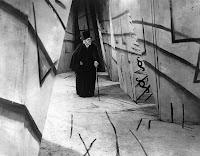'She' is a Fantasy/Adventure novel written by Henry Rider Haggard, first published in 1887. The main plot of the book follows the adventure to a lost kingdom somewhere in Africa by the main character, Horace Holly, who is accompanied by a friend, Leo Vincey. On their journey they encounter a group of natives lead by a white queen, Ayesha, Otherwise known as 'She' or 'She-who-must-be-obeyed'.
 The author of the book, H.R. Haggard (22 June 1856 – 14 May 1925), was an English writer of mainly adventure novels including, King Solomon's Mines, Cleopatra and what is considered his most famous work, She. Haggard was also one of the founders of the Lost World genres. This literary genre is a sub genre of the fantasy or science fiction genre that revolves around the discovery of a new worlds.
The author of the book, H.R. Haggard (22 June 1856 – 14 May 1925), was an English writer of mainly adventure novels including, King Solomon's Mines, Cleopatra and what is considered his most famous work, She. Haggard was also one of the founders of the Lost World genres. This literary genre is a sub genre of the fantasy or science fiction genre that revolves around the discovery of a new worlds.The book was said to have been inspired by Haggard's experiences of trips to South Africa and British colonialism. Links that were drawn from the character, Ayesha, is that the the novel explored themes of female authority and feminine behaviour.
She also used illustrations to help create a new world to the reader; the artist who created these images was E.K. Johnson.
The first excerpt I was given shows Holly being shown an abandoned city left in ruins. The scene contains large structures such a temples and marble pillars and also a religious statue. Whereas the second excerpt given describes the group exploring many underground caves, tunnels and caverns, following warm, bright glowing lights.














